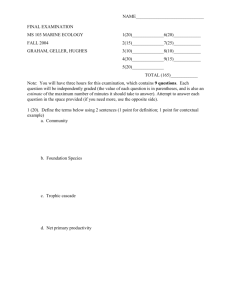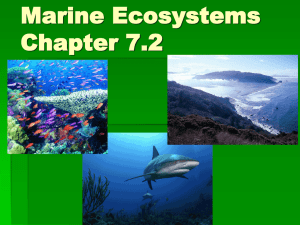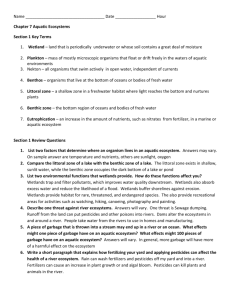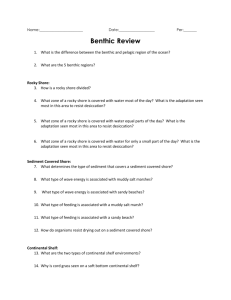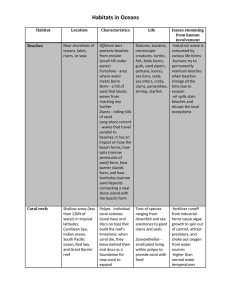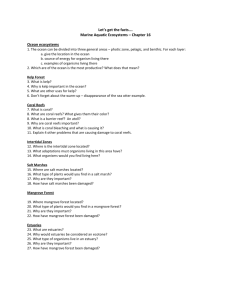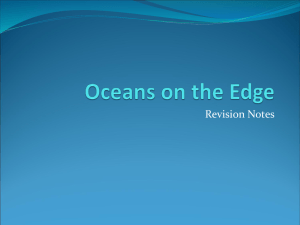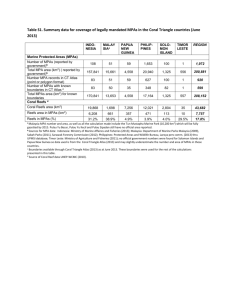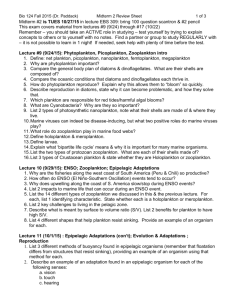Marine Environments
advertisement
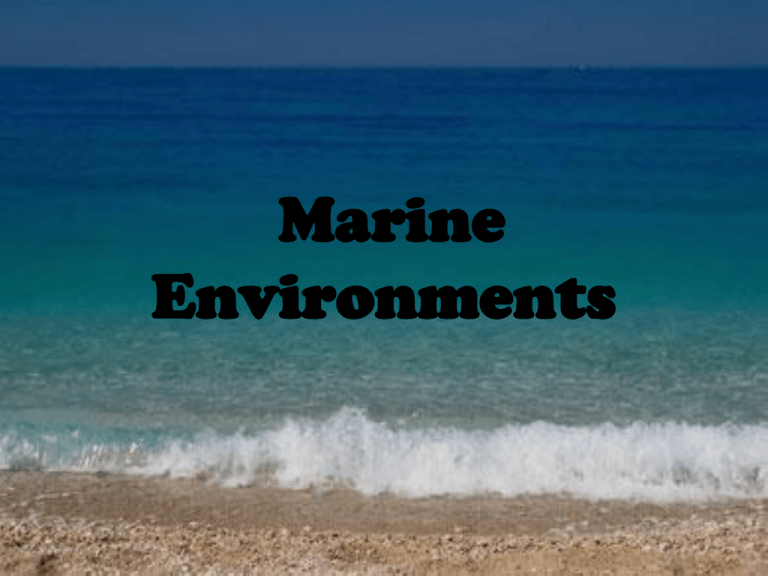
Marine Environments Why is the water below foaming? Sandy Coasts • Very unstable, sands constantly shift and move. This is a harsh, unstable environment. • The surf zone is constantly moving up and down with the tide, and attracts a large number of fish and diving birds. • Creatures burrow in the sand for protection. • Millions of microorganisms live in the sand. • Crabs and small fish live in the surf zone. • Sandy beaches are older than Rocky beaches, and are created by weathering and erosion. Rocky Coasts • Rocky beaches provide a more stable environment. • Rocky beaches contain coves, crevices, and tunnels in which marine organisms can hide. • Rocky beaches are divided into 3 tidal zones, depending on how high or low the tides are. • Low tide exposes creatures and puts them at risk of drying out. • Shellfish close their shells to keep from drying out and will open up once the tide comes in. • In summer they act as nesting/breeding grounds for many marine birds. • Rock pools provide safe areas for animals that suffer from exposure to the air and drying sun. Summary • Sandy Coasts are less stable, have less organisms living there, and are older than rocky coasts. • Rocky coasts are more stable, and are a home to more diverse organisms because of the protection they provide. Let’s go to the Video! Estuaries • These are coastal regions where the freshwater from rivers, meets and mixes with, the salt water from the ocean. • Estuaries are semi-enclosed areas and represent a close interaction between the land and the sea. • This water is neither fresh or salt, it is called “Brackish”. • These areas are considered to be the “nurseries” of the of the marine world. • Estuaries are highly productive. • They have muddy bottoms, which is made up of the sediments that are carried down from the rivers and settle to the bottom. Types of Estuary Communities • Salt Marsh Community• Marsh grasses • Controlled by tides • Have nutrient rich waters • Are considered the “nurseries” of the estuary. The Salt Marsh The Mud Flat Community • • • • Has dark muddy sand. No grasses. Little or no aeration in the sand. Considered the “graveyards” of the estuary. • Mud Flats are caused by decomposing bacteria turning the wastes In the sand into a dark mud. • Decomposers cause decaying organisms to produce H2S (foul smelling odor). Mud Flats The Mangrove Community • Found in warmer, tropical areas. • Inlets and bays are covered by mangrove trees. • Mangrove swamps protect the shore from erosion. • Mangrove swamps act like giant sponges and absorb the impact of storms and high waters. A Mangrove Swamp The Coral Reef • The most spectacular of all the marine environments. • Has the most biodiversity of all the marine environments. • Found in tropical and sub-tropical zones. • Reefs are built from the sea floor by coral polyps. • Reefs will grow up to the surface, but will not grow out of the water. • Australia’s Great Barrier Reef is the world’s largest natural made structure (2000km), and contains over 1500 species of fish. • Each coral is unique in its shape and color. • Coral Reefs are extremely productive. • Coral Reefs are extremely fragile and pieces of coral break off easily. • Many reefs are now in danger of being destroyed because of over fishing, diving, pollution, and poor handling of educating the public on the importance of maintaining the vitality of coral reef populations. Coral Reefs Summary • An Estuary is where freshwater and saltwater meet and mix. • Estuaries are very diverse and productive areas. • Living organisms have special adaptations to help them live in the various marine environments. HW Read in the Text on Marine Environments pages 74-82. Answer questions on page 82, #1-3. Let’s go to the Video!

